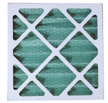|
|
For The IAQ Industry Aug., 2008 Vol. 1
|
Air Filtration
|
 In North America, most homes do not have airborne particle levels that are problematic. However, in some cases, particle levels can be a serious problem, particularly if any of the home's occupants suffer from allergies or respiratory illness. In such cases, an air cleaning strategy must be developed. According to Canada's Residential Energy Efficiency Database, air should be filtered continuously to be effective. If houses use heating systems other than forced air and do not have ce ntral ventilation system, then it is very difficult to effectively filter the air. They further make the observation that standard forced air furnace filters are generally ineffective at removing health damaging particles form the air. In North America, most homes do not have airborne particle levels that are problematic. However, in some cases, particle levels can be a serious problem, particularly if any of the home's occupants suffer from allergies or respiratory illness. In such cases, an air cleaning strategy must be developed. According to Canada's Residential Energy Efficiency Database, air should be filtered continuously to be effective. If houses use heating systems other than forced air and do not have ce ntral ventilation system, then it is very difficult to effectively filter the air. They further make the observation that standard forced air furnace filters are generally ineffective at removing health damaging particles form the air.
|
Interesting Facts from Published Reports
|
- A recent study found that the allergen level in super-insulated homes is 200% higher than it is in ordinary homes.
- According to Scientific America, a baby crawling on the floor inhales the equivalent of 4 cigarettes a day, as a result of the outgassing of carpets, molds, mildews, fungi, dust mites, etc.
- No home or building is immune to indoor air quality problems.
- A Study conducted in Philadelphia tested homes for the number one allergy trigger – cat dander. They found 100% of the homes contained cat dander, despite the fact that many of those homes did not have a cat.
|
Indoor Pollutant Levels
|
| Concentrations of indoor air pollutants are influenced by outdoor levels, indoor sources, the rate of air exchange and the characteristics and furnishing of the building. For example, the NO2 levels in homes are affected by gas heaters and cooking ranges. In one study, the average NO2 concentrations in kitchens with gas ranges averaged 40-70µg/m3. In dwellings without gas equipment, the average was 10-20µg/m3. |
|
|
|
|